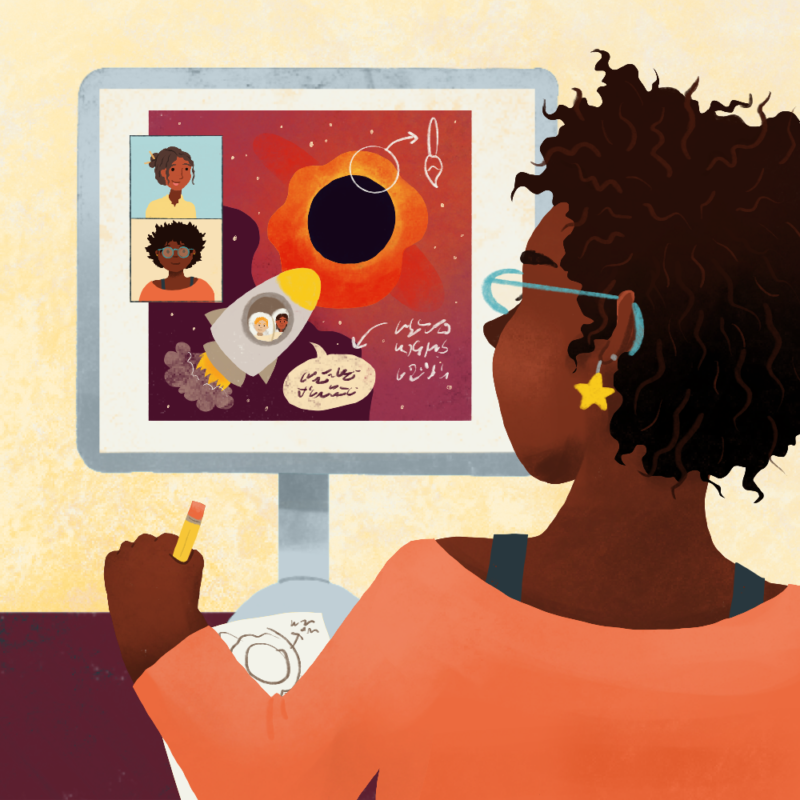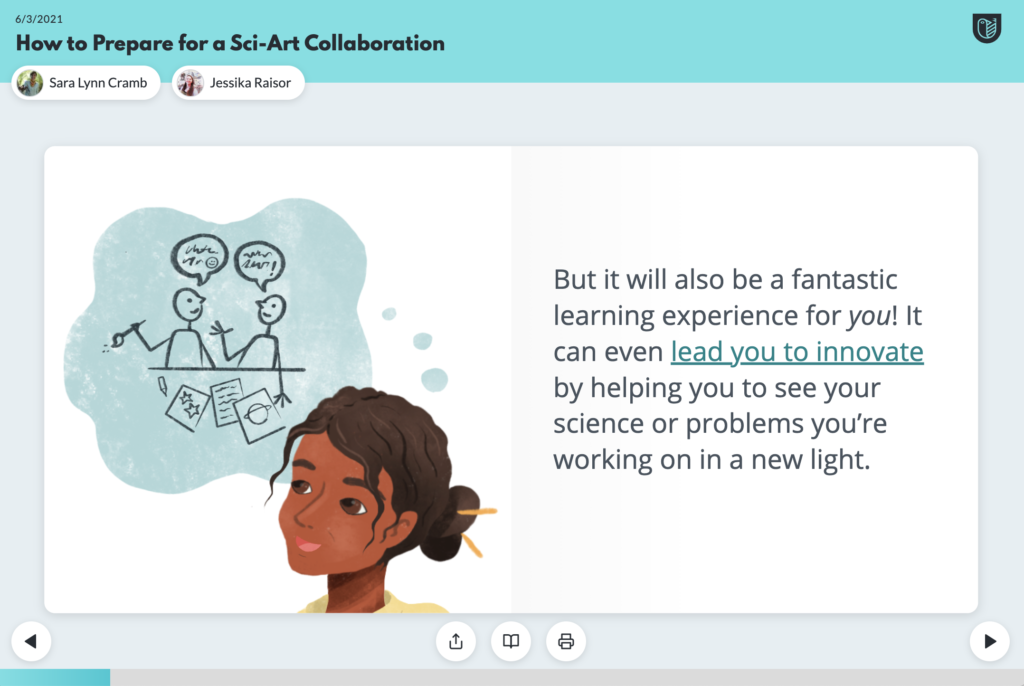The Lifeology SciComm Program has a new flashcard course to help scientists and other experts learn how to prepare for Sci-Art collaborations! This short course walks you through how to work with artists to improve your science communication efforts.
We’ve found that a majority of scientists, when asked, express a desire to collaborate with artists and other creators. They recognize that such Sci-Art collaborations can make their science more accessible and engaging for broader audiences. However, most scientists don’t end up working with artists. The barriers that stand in their way include funding… and not knowing where to start. Scientists may also make mistakes in their first collaborations with artists that leave them frustrated and unsure about starting future collaborations.
To address these concerns, we’ve created a fun and short Lifeology “flashcard” course about how to prepare for a successful Sci-Art collaboration! Jessika Raisor and I wrote this course and Sara Lynn Cramb illustrated it. Learn with our fictional character Jules, who is based on people Lifeology artists have worked with in the past. Through Jules’ journey, you will learn the do’s and don’ts of collaborating with an artist and see what a successful collaboration can look like and how valuable it can be.

From the Artist
I was very excited when Paige approached me to work on this course! It can be intimidating for some scientists, teachers and researchers to collaborate with artists. Our goal with this course was to make something approachable and that clearly laid out best practices for a successful sci-art collaboration.
Jessika Raisor did an excellent job with the script, making sure to cover the most pertinent topics. Paige and Elaine helped to refine the script and offered helpful feedback at every stage. I offered a bit of advice on things to consider and include from an artist’s perspective and endeavored to make illustrations that were equal parts informative and engaging.
I hope this course encourages more sci-art collaborations and can help improve the quality of those collaborations.

Tips for Working with Artists
- Do your research – review artists’ portfolios and learn more about them.
- Ideally consider a few different artists to find a person and art style that best fits your project.
- Write a creative brief and provide examples of what you are hoping to achieve, or of desired art styles or formats for your project.
- Sketch your ideas – this can also help you start to think in terms of creative visuals.
- Have a budget and timeline in mind.
- Brainstorm with the artist and leave room for their input and creativity.
- Trust and provide the artist with creative freedom. Give them decision-making power. Trust the artist to be an equal collaborator.
Get early feedback from stakeholders or anyone at your organization who will need to approve the content. - Don’t be afraid to ask questions – ask them early and often.
- Give detailed feedback on sketches and ask if you don’t understand.
- Be open to visual metaphors and having fun.
- Abstract ideas and concepts are often more difficult to visualize than characters and action – but the artist can help if you let them collaborate on coming up with the content ideas.
- Establish a channel for timely and frequent communication. Be available.
- It takes time – prepare for multiple drafts.
- Pay the artist! Exposure does not count as payment.




